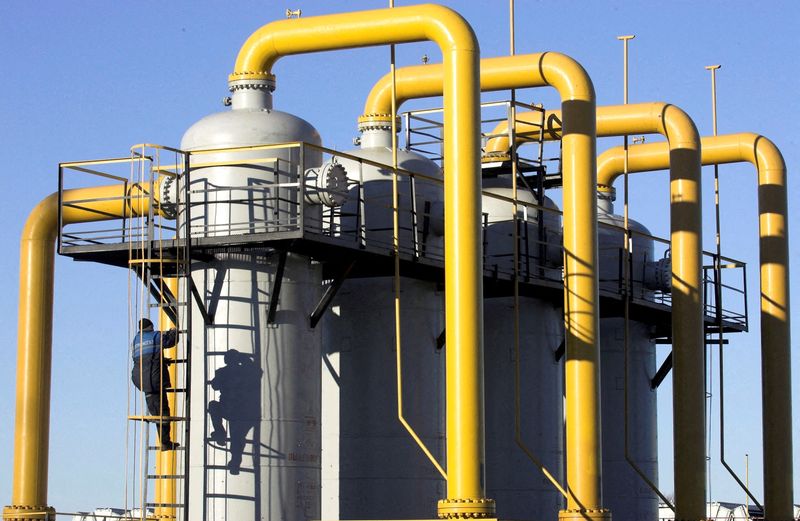LONDON (Reuters) -British and Dutch gas prices closed 40-60% higher on Thursday, along with gains in oil, European power and other commodities, after Russian forces launched an invasion of Ukraine.
Russian forces fired missiles at several cities in Ukraine and landed troops on its coast on Thursday, officials and media said, after President Vladimir Putin authorised what he called a special military operation in the east.
In the Dutch gas market, the front-month contract was up 40.65% at 118.50 euros per megawatt hour (MWh) by 1700 GMT but still below December’s record high of nearly 185 euros/MWh.
The summer 2022 price was up 65.7% at 138.35 euros/MWh while the winter 2022 contract was up 42.86% at 125.00 euros/MWh.
In the UK gas market, the March price was up 58.6% at 321.97 pence per therm and the winter 2022 price had risen 37.85% to 305.00 p/therm.
Oil prices jumped, with Brent climbing above $105 a barrel for the first time since 2014. [O/R]
“This is panic buying. An invasion has been widely expected,” one gas trader said.
Russian gas exports via Ukraine have continued as normal and are in line with requests from consumers, Russian energy giant Gazprom said.
Ukrainian energy company Naftogaz said the country’s energy infrastructure has not been the subject of systemic shelling and the “situation is under control”.
Eastbound natural gas flows via the Yamal-Europe pipeline halved on Thursday morning on their way to Poland – the same day that Moscow ordered forces to invade Ukraine.
It was not immediately clear whether the lower flows were related to developments in Ukraine, another major route for Russian gas exports to Europe. Russian state gas company Gazprom declined immediate comment.
Russia exports about 180 billion cubic metres (bcm) of gas a year to Europe and Ukraine.
Ukraine accounts for about 40 bcm (around 20% of total Russian supply) as a transit corridor, said sector strategist Allen Good at financial services company Morningstar.
“Halting supplies via Ukraine for two weeks would impact a bit under 2 bcm, which can easily be handled with slightly higher LNG supply and existing gas storage levels in Europe,” he said.
“U.S. LNG capacity is essentially running at near 100% capacity currently, but Morningstar believe there’s room to temporarily exceed nameplate capacity to provide additional supply on a short-term basis.”
Meanwhile, EU carbon prices fell, with the benchmark December 2022 contract down 8.27% at 87.21 euros a tonne.
Marcus Ferdinand, head of analysis at market intelligence company Greenfact, said the drop could be because of speculative selling, coupled with margin calls that needed to be covered as the energy complex spiked.
“That caused some traders to sell some of their positions to be able to maintain these positions by liquidating some of their carbon portfolio,” he added.
(Reporting by Nina Chestneyadditional reporting by Forrest Crellin and Marwa Rashad;Editing by David Goodman)



















